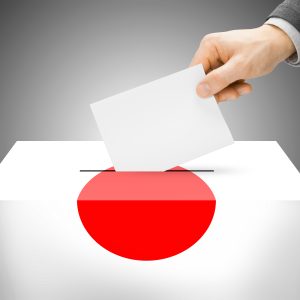On September 27, the Liberal Democratic Party (LDP) chose Ishiba Shigeru as the party president – and, by extension, Japan’s prime minister. Ishiba immediately called for a snap election, hoping to secure a public mandate.
It didn’t go well.
The LDP and its longtime ally Komeito suffered major losses. While their coalition still came away with the most seats of any bloc, they lost their outright majority and are scrambling to find another partner to form a government.
The LDP won just 191 seats, with Komeito adding an extra 24. That brings the coalition total to 215 – down from its previous seat-count of 279, and short of the 233 needed to constitute a majority in Japan’s House of Representatives.
Meanwhile, Japan’s largest opposition party, the Constitutional Democratic Party (CDP) won 148 seats, 52 more than in the last election. CDP leader Noda Yoshihiko declared victory: “Our goal was to break the ruling party’s majority, so the fact that we have achieved it is a huge accomplishment.”
However, the CDP does not have enough seats to form a government either. That means some of the smaller opposition parties are in a position to play kingmaker. Nippon Ishin no Kai, a conservative opposition party, holds 38 seats in the new parliament; Ishin had previously pledged not to join an LDP government but there is no love lost between it and the CDP.
The Democratic Party for the People (another center-right opposition party) won 28 seats, Reiwa Shinsengumi (a left-wing party) won nine, and the Japanese Communist Party (which has in the past allied with the CDP’s previous incarnations) won eight.
For either the LDP or the CDP to form a government, they would need to win over at least two additional parties to join a coalition.
This election marked the first time the LDP has lost its majority since 2009. Back then, the LDP was actually forced out of government entirely; this time, Ishiba has said he intends to remain as prime minister, but that depends on the LDP’s coalition building efforts.
“We have received an exceptionally harsh judgement from the public,” Ishiba said as the results came in. “… We must humbly and solemnly accept this outcome, reflect sincerely and work toward a complete renewal of our party.”
The LDP’s dismal performance was indeed a reflection of voter skepticism that the party can truly reform itself. The LDP has been plagued by headline-grabbing scandals since the tenure of Ishiba’s predecessor, Kishida Fumio, related to the nexus between money and influence in Japan’s political sphere.
While Kishida declined to run for re-election in the LDP presidential race to take responsibility, the general public was clear that their disapproval was not pegged to Kishida personally, but extended to the party as a whole. The LDP’s legislative attempts to reform Japan’s political fundraising law were widely viewed as too little, too late by the public.
The LDP made a gesture toward reform by electing Ishiba, a long-time maverick who had tried and failed to win the top spot four times before. Yet after he assumed office Ishiba appeared to walk back his more iconoclastic tendencies, raising doubts that he would be able to pursue a truly different agenda.
Yet for all the public disapproval of the LDP, skepticism runs deep about the opposition’s governance abilities. The last time the LDP was out of power, the CDP’s precursor, the Democratic Party of Japan (DPJ), cycled through three ineffective prime ministers – including current CDP chief Noda – in three years. The CDP swears that it gained valuable experience from its brief stint in government, and will be more successful this time around, but the public remains wary.
With both the opposition and the ruling party unpopular, a sense of disillusionment may have resulted in the low turnout. With just 53.85 percent of Japanese voters participating in the polls, it marked the “third lowest [turnout] in the postwar period,” NHK reported.
Meanwhile, negotiations continue to determine which party will actually rule Japan going forward. Ishiba suggested it would take some time: “We are not thinking of instantly forming a new coalition at this point. I think we need to start by discussing how to introduce each parties’ policies with a humble attitude. In the process, we will work to build a relationship of trust with other parties…”
Under Japan’s constitution, there is a window of 30 days to form a government after an election.

































